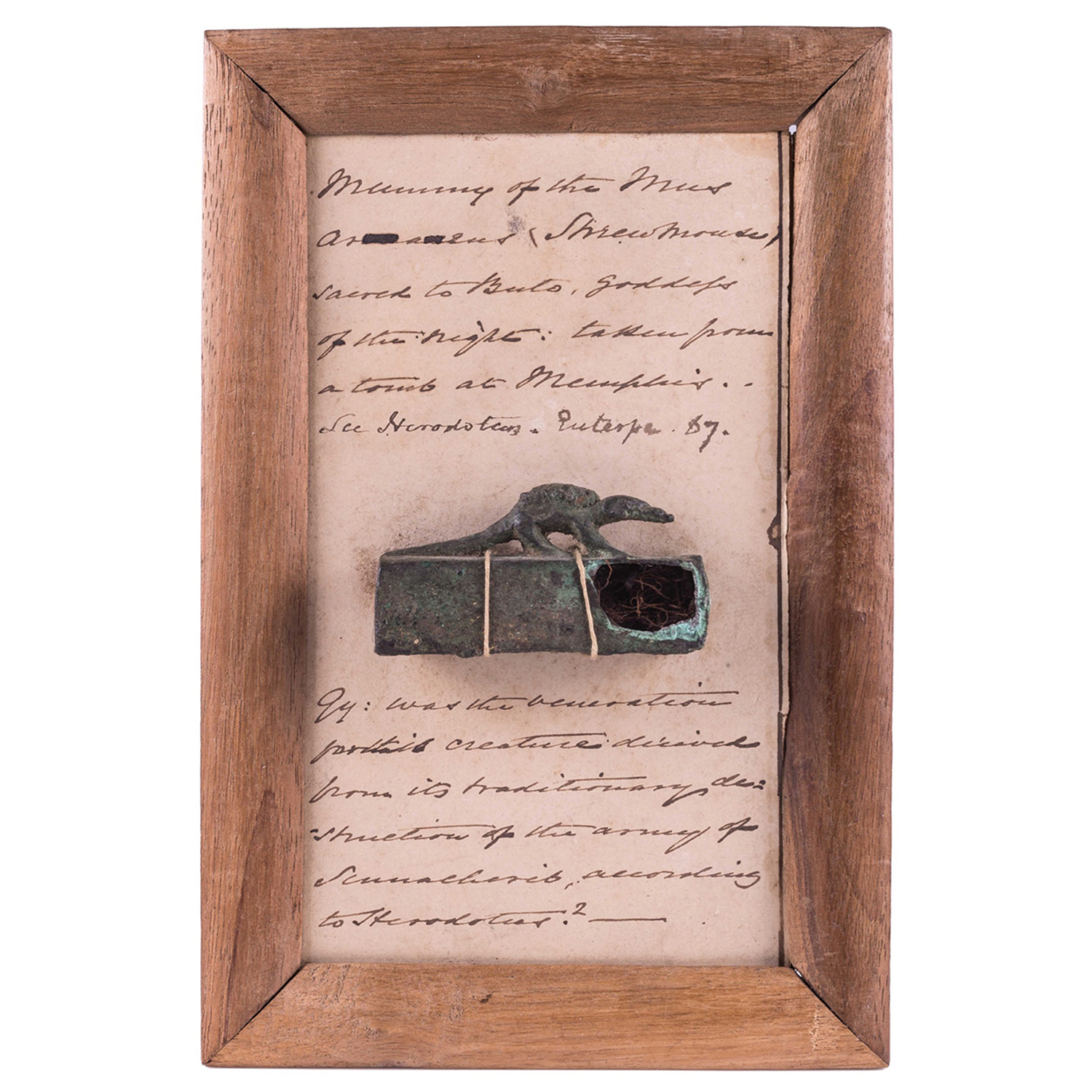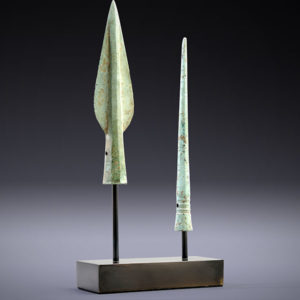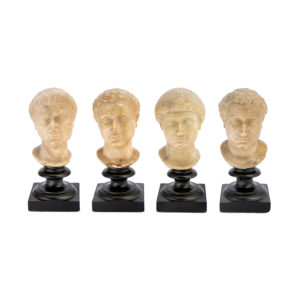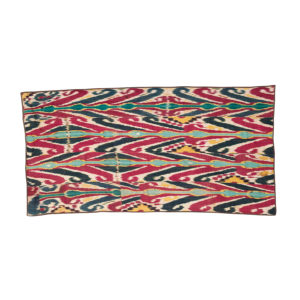A charming cast of a bronze Egyptian pygmy shrew figure (Crocidura Religiosa) on the top of a sarcophagus made to hold a real mummified shrew as an offering. This open form of a rectangular sarcophagus contains a small mummy, which is carefully wrapped.
Crocidura Religiosa – represents the night, guide of the dead and is the sacred animal of goddess Wadjet of Buto.
This depiction is bigger than the actual animal it is based upon! The adult Egyptian pygmy shrew is one of the smallest mammals on earth, weighing just 7 grams, but they are voracious eaters. Thousands of mummified shrews have been found underneath Egyptian temples.
Animals played a big part in the mythology and religion of ancient Egypt. Some animals were associated with or sacred to the gods, but animals themselves were not worshipped. Some animals sacred to the gods were raised on farms specifically to be killed and mummified and sold to people who made pilgrimages to the temples.
The Egyptians believed a god could inhabit the body of a particular falcon, and that falcon would be considered a living cult image. As the living representation of the god, that falcon would be worshipped as if he were the actual god, Horus. (Source: Pat Remler (2010), Egyptian Mythology, A to Z, pp. 14-15)
Bronze Shrew Sarcophagus
SOLD
A Bronze Shrew Sarcophagus
Period / Age: Egypt, Late Period, ca. 664 - 332 BC
Provenance: A private English collection formed in 1980s.
Dimensions:
| Length: | 17cm (with support) (6.7") |
| Height: | 11cm (4.33") |
X






